Treatment of a brain aneurysm
Esophageal atresia is a congenital malformation that occurs in one of 3,000 to 5,000 newborns. The disease poses a great danger to the child: without timely medical care, the prognosis for health is unfavorable. But experienced doctors at the EMC Perinatal Center diagnose the pathology in time and refer the child to surgery for its correction.
Esophageal atresia: general information
Normally, the esophagus and trachea are two separate structures. Both of them are formed by cartilaginous rings and are located next to each other: the esophagus behind the trachea. The esophagus is a tube that connects the pharynx and stomach, that is, it serves to carry food from the oral cavity to the organs of the gastrointestinal tract. In turn, the trachea is the windpipe, a tubular organ that continues the larynx and subsequently divides into two bronchi. The function of the trachea is to conduct air into the lungs.
This system is established in the fetus at the earliest stage of development. At 2-3 weeks, a tube is formed in the embryo— the primary intestine, closed at the anterior and posterior ends. The primary intestine is divided into the pharyngeal and the trunk. The pharyngeal cavity subsequently forms the organs of the pharynx and oral cavity, and the anterior one forms the esophagus and stomach, as well as the trachea and bronchi, which separate from each other after 20on the day of gestation, they grow in the head direction. At the same time, the esophagus is formed as a special structure by the 4th week of embryo development, and the trachea is fully formed later — starting from the 10th week of development.
In some cases, the direction and speed of development of these organs are disrupted. In this case, the upper and lower parts of the esophagus may be disconnected. In other words, the organ is formed not in the form of a tube, but in the form of two disconnected structures. Sometimes these are separate blind segments, each of which ends with a "bag". But in almost 90% of cases, one or both disconnected segments of the esophagus open into the trachea (tracheopesophageal fistula or fistula).
The absence of an anatomically natural channel or opening in the body is called atresia. In this case, they are talking about atresia of the esophagus. With this pathology, saliva or food cannot pass through the esophagus to the stomach and either exit back through the mouth or enter the respiratory tract, which provokes respiratory disorders and pneumonia.
Sometimes esophageal atresia is the only birth defect in a child. In other cases, it appears as part of a complex of other congenital anomalies, which is associated with a general violation of the formation of anatomical structures at an early stage of embryo development. In the international classification, combinations of combined congenital malformations have received abbreviated names according to the names of the affected organs:
- VACTERL Association— spinal anomalies, anal atresia, heart defects, esophageal atresia and tracheoesophageal fistula, kidney anomalies, radial bone defects.
- CHARGE syndrome— coloboma, heart defects, hoan atresia, developmental delay, structural abnormalities of the genitals and hearing organs. Although esophageal atresia is not an official component of this syndrome, it is present in 10% of patients.
The most common vices are:
-
heart and cardiovascular system — 23%;
-
musculoskeletal system— 18%;
-
digestive system— 16%;
-
genitourinary system— 15%.
Esophageal atresia is a severe defect incompatible with life, which, before the development of surgical techniques, inevitably led to death. However, today surgeons are successfully correcting the pathology. Treatment options depend on the presence and severity of concomitant abnormalities. But in many cases, timely surgery gives the child a chance for normal development and a long healthy life.
Types of diseases
Esophageal atresia is classified according to the location of the defect, the presence of a tracheoesophageal fistula, and its spatial relationship to atresia. There are 5 types of pathology in total:
-
An AP with a distal tracheoesophageal fistula. This is the most common form of pathology, accounting for over 85% of cases. With this defect, the upper segment of the esophagus, extending from the pharynx, has a blind end, a large diameter and a thickened muscle wall. The lower segment of the esophagus has a narrow lumen and connects the stomach to the trachea through its posterior or lateral wall. Due to the inability to swallow, a large amount of mucus accumulates in the child's mouth. When screaming, due to air entering the stomach, overstretching of the organ occurs. The acidic contents of the stomach are thrown into the trachea and further into the lungs, which causes "chemical" pneumonia.
Isolated AP without a fistula ("pure" atresia). This pathology is diagnosed in 7% of cases. In isolated atresia, the upper and lower segments of the esophagus have blind endings, none of them communicate with the respiratory tract. Usually, the blind sections of the esophagus are located at a sufficiently large distance from each other (atresia with large diastasis). In order to be able to feed the baby, a gastrostomy is installed on the first day of life. It will be possible to restore the continuity of the esophagus later, when the baby grows up a little.
- Tracheoesophageal fistula without atresia. This form is noted in 4% of cases. The trachea and esophagus have a normal lumen and good patency, but at an early stage of development they are not completely separated, so an abnormal message remains between them. Sometimes there is only one fistula, but there can also be two or three fistulas. AP with distal and proximal tracheoesophageal fistula. This is a fairly rare pathology that is diagnosed only in 2% of patients with esophageal atresia. Both ends of the esophagus communicate with the trachea.
- AP with a proximal trachoesophageal fistula. This form of atresia is noted only in 1% of cases. In this type of defect, the lower part of the esophagus ends in a blind segment, and the upper part connects to the trachea through the fistula.
There are also very rare forms of esophageal atresia that are not classified. For example, these include congenital stenosis or agenesis of the esophagus (partial or complete underdevelopment).
Causes of esophageal atresia
The causes of the pathology are still unclear. It was not possible to associate AP with any particular factor, so it is believed that it usually occurs sporadically, that is, by chance. Nevertheless, some factors increase the risk of pathology.
- Genetic factors. The fact that in some cases atresia is hereditary is indicated by its increased frequency in twins. Changes in the Shh, SOX2, CHD7, MYCN, and FANCB genes are associated with a higher risk of developing pathology. Esophageal atresia is also associated with chromosomal abnormalities, for example, it is diagnosed in many children with Edwards syndrome. It is believed that the genetic factor is responsible for about 10% of cases.
- Maternal and environmental factors. According to some studies, the risk of AP is higher during the first birth, and also during late pregnancies. In some cases, the pathology is associated with exposure to toxic factors during pregnancy (herbicides, insecticides), as well as taking hormonal medications. It is known that some forms, such as tracheoesophageal fistula without atresia, are more common in infants whose mothers suffer from diabetes mellitus. The pathology may be related to other unfavorable factors: bad habits of the mother, insufficient nutrition, deficiency of vitamins and trace elements, previous infections.
Symptoms
Suspicion of esophageal atresia usually occurs immediately after the birth of a child during an initial examination in a maternity hospital. Since the baby cannot swallow, a large amount of saliva and mucus accumulates in his mouth, and a characteristic foam appears at his lips and nostrils. At the first feeding, the baby chokes on food, coughs, and the milk or mixture regurgitates unchanged. Due to lack of air, cyanosis may occur— cyanosis of the skin and mucous membranes. If milk or gastric juice enters the lungs through the trachea, aspiration pneumonia appears, and a life—threatening condition, respiratory distress syndrome, may develop.
If the lumen of the esophagus persists, then there is an isolated tracheoesophageal fistula, the symptoms may be mild. Depending on the diameter and angle at which the trachea and esophagus connect, coughing attacks due to milk aspiration and cyanosis during feeding are possible. In some cases, the pathology manifests itself only by the fact that the child coughs in a horizontal position and often suffers from pneumonia.
Diagnostics
If pregnancy management takes place in a clinic with experienced doctors and modern ultrasound equipment, in some cases it is possible to suspect esophageal atresia prenatally during screening ultrasound examinations. Diagnostic criteria:
-
polyhydramnios (polyhydramnios)- occurs in 60% of cases of AP;
-
the stomach has an abnormally small size or is not visualized.;
-
fetal growth retardation;
-
a dilated and hypertrophied oral segment of the esophagus (that is, an expanded and enlarged blind sac due to fluid accumulation).
The accuracy of prenatal AP diagnosis is approximately 30%. But if an intrauterine pathology is suspected, doctors who examine a child after birth will be particularly cautious, conduct more in—depth research, and, if necessary, postpone the first feeding until the diagnosis is confirmed and quickly begin preparations for surgery. and the treatment. In more than 90% of cases, AP is diagnosed on the first day of a child's life.
Diagnostic measures in case of suspected esophageal atresia:
- Introduction of a special probe. A miniature flexible nasogastric tube with a rounded end is inserted into the nasal cavity of a newborn and moves down the pharynx and esophagus. After reaching the blind end, it forms a loop and appears in the oral cavity.
- Elephant sample. Through a probe inserted into the esophagus, air is injected with a syringe. If there is no patency of the esophagus, the air comes out with a characteristic noise.
- Radiography. An overview image of the thoracic and abdominal cavities is performed. Sometimes the image is taken with a water-soluble contrast agent. The beginning of the folded radiopaque probe is determined at the blind end of the esophagus. If gas is detected in the stomach and intestines, this indicates the presence of a fistula. If the stomach is not visualized, it indicates the absence of a fistula. X-ray examination can also reveal concomitant pathology, for example, malformations of the spine.
- Tracheoscopy. Such a study makes it possible to identify an isolated tracheoesophageal fistula.
To assess the general health of a newborn with atresia, a blood test is performed before surgery. Additional examinations may be prescribed to identify concomitant malformations: ultrasound of the genitourinary system, EchoCG, and neurosonography.
Treatment
The only treatment for esophageal atresia is emergency surgery. Depending on the type of pathology, various types of surgical intervention are used.
- Thoracotomy. Surgical intervention with open access. During the operation, the doctor performs ligation of the fistula, that is, stitches and tightens the fistula. After that, the segments of the esophagus are mobilized and an anastomosis is superimposed on them, that is, the segments are stitched together into an anatomically correct tubular structure. After the operation is completed, the wound is sutured in layers.
- Thoracoscopy. The study, which is performed with closed access using a video probe, is the least traumatic, therefore it is considered preferable in modern surgical practice. However, the method places special demands on the clinic's equipment and the qualifications of a pediatric surgeon. The operation is performed through three small incisions, into which a probe and microsurgical instruments are inserted to perform the necessary manipulations.
- Staged correction. This method of treatment is used in cases where the gap between two sections of the esophagus is too large to allow an anastomosis to be performed in a single operation. This pathology is considered particularly difficult. During the first operation, the fistula is removed and a gastrostomy is installed, through which the patient will be fed until the esophagus function is restored. Various techniques involve artificially stretching sections of the esophagus by fixing them to the chest or waiting for 1-2 months until the segments reach the required length. Next, a second operation is performed to apply an anastomosis. Plastic surgery of the esophagus with inserts from the small or large intestine is also possible.
After surgical treatment, the child usually remains on artificial ventilation for 3-5 days. Further feeding is carried out through a probe until the attending physician is convinced of the viability of the anastomosis. After that, feeding the baby is possible through the mouth.
Due to the complexity of surgical treatment of pathology, complications are possible in about 20% of cases in the postoperative period. These include the failure of the anastomosis of the esophagus, stenosis (narrowing) anastomosis (the junction of the esophagus with each other or the intestinal insert). In case of complications, additional treatment, repeated surgery, or augmentation may be required — dilation of the esophageal stricture using a special tool.
Frequently Asked Questions
How long do children with esophageal atresia live?
Today, with timely diagnosis and quality treatment, over 90% of children survive. A threat to life appears only in the presence of combined severe pathologies. If surgical correction of anomalies was successful, after surgery, the life expectancy of patients, their physical and mental development have no deviations compared to children who were born healthy.
Which form of esophageal atresia is more common than others?
Esophageal atresia with a lower tracheoesophageal fistula is most common — this pathology is diagnosed in more than 80% of cases.
Is it possible to prevent esophageal atresia?
There are no ways to prevent the development of the defect during pregnancy. The expectant mother can only be recommended to undergo all preventive examinations in order to increase the chances of timely diagnosis of pathology. In addition, you should take care of your own health and the health of your baby: follow the rules of a healthy diet, maintain physical activity allowed by your doctor, and have a good rest.
What to expect after surgical treatment?
Over 80% of children after surgery to eliminate the defect lead a normal, fulfilling life without any restrictions. However, some babies may experience moderate consequences of the pathology and its treatment:
-
difficulty swallowing (dysphagia);
-
gastroesophageal reflux disease is a condition in which the contents of the stomach are thrown into the esophagus from time to time, which is accompanied by unpleasant symptoms.;
-
respiratory tract symptoms: constant coughing, shortness of breath, noisy breathing;
-
chronic or frequently recurrent respiratory infections and diseases of the upper and lower respiratory tracts;
-
Tracheomalacia is a weakening of the cartilage of the trachea, which causes breathing difficulties.
Esophageal atresia is a dangerous but rare pathology that modern doctors successfully eliminate without risking the health of the baby. The treatment is performed by highly qualified neonatal surgeons who use advanced diagnostic and therapeutic equipment. You can ask any questions by phone +7 495 933-66-55.
Why the EMC
The first and only clinic in Russia, created in the image of the world's leading clinics
EMC is a multidisciplinary center offering patients a high level of medical services and a personalized approach
Worldwide recognition and awards
 Learn more
Learn more
Worldwide recognition and awards
 Certificates and licenses
Certificates and licenses
Make an appointment for a consultation
Specify your contacts and we will contact you to clarify the details
Reviews
and new products of the EMC
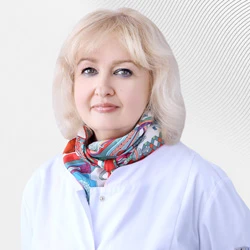
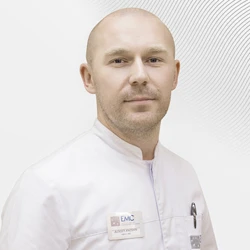
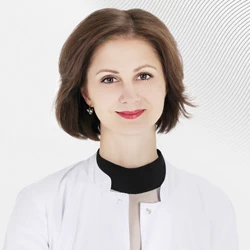
.webp)
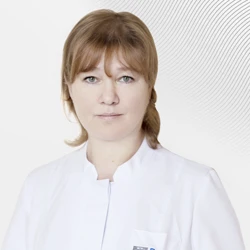
.webp)
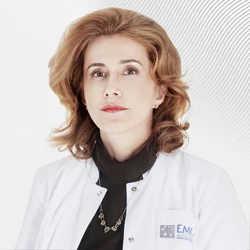
.webp)
.webp)
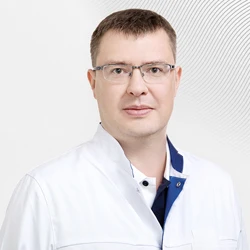
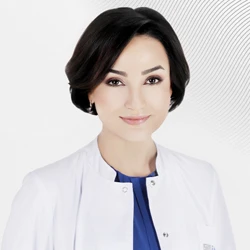
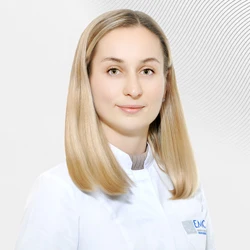

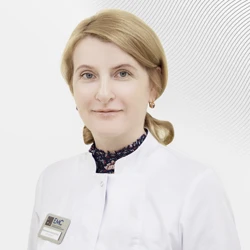

.webp)
.webp)
.webp)
.webp)
.webp)
